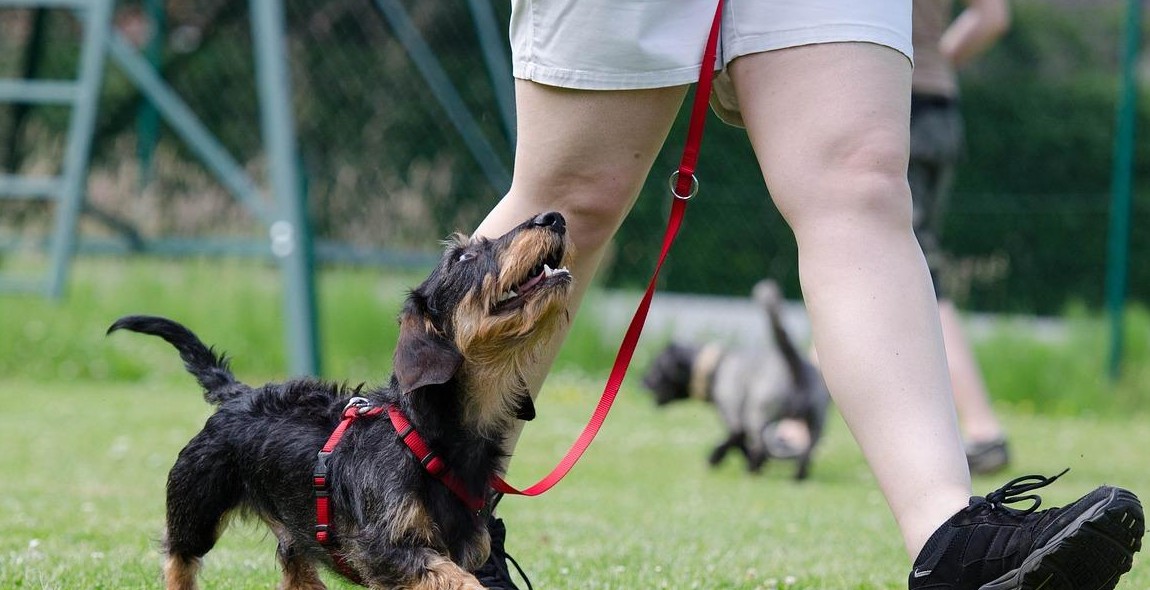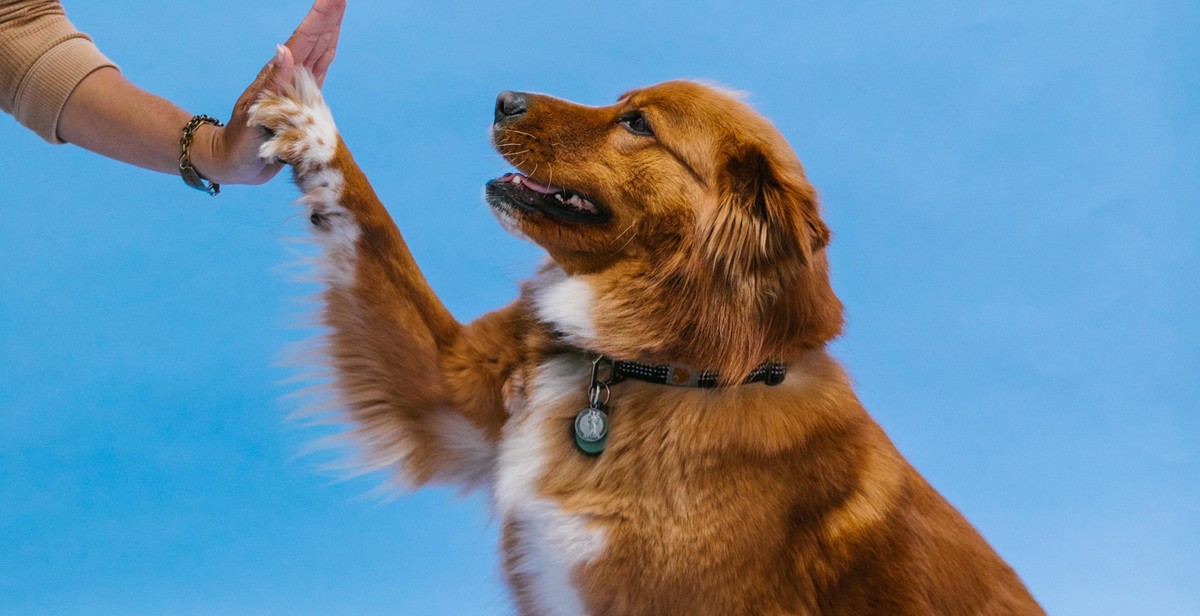How to Train Your Dog: Techniques for Obedience and Behavioral Training
Training your dog is an essential part of being a responsible pet owner. Not only does it ensure your dog’s safety, but it also strengthens the bond between you and your furry friend. However, training can be a challenging and time-consuming task, especially if you’re not sure where to start.
The Importance of Training Your Dog
Training your dog goes beyond teaching them basic commands like “sit” and “stay.” It also involves behavior modification, such as curbing aggression, anxiety, and destructive habits. Proper training can prevent your dog from developing severe behavioral issues that may lead to costly vet bills or worse, relinquishing them to a shelter.
My Personal Experience
As a professional dog trainer with over ten years of experience, I’ve seen the positive impact of training on both the dog and owner. My own dog, a rescue pit bull named Max, was once reactive and fearful. Through positive reinforcement training, he’s now a confident and well-behaved pup who loves to learn new tricks.
In this article, I’ll share my expert tips and techniques for training your dog, from basic obedience to addressing behavioral issues. Whether you’re a first-time dog owner or looking to improve your current training routine, this guide has everything you need to know to raise a happy and well-behaved pup.

Understanding Your Dog’s Behavior
Training your dog requires more than just teaching them commands. You need to understand your dog’s behavior and communication to effectively train them. Here are some important things to keep in mind:
Canine Communication
Like humans, dogs communicate in various ways. They use body language, vocalizations, and scents to convey their feelings and intentions. Understanding your dog’s communication can help you train them better and prevent behavioral problems.
Dogs use their tails, ears, and body posture to communicate. For example, a wagging tail usually means they’re happy or excited, while a tucked tail indicates fear or anxiety. Similarly, raised ears indicate attentiveness, while flattened ears indicate fear or aggression.
Dogs also use vocalizations such as barking, growling, and whining to communicate. Barking can mean different things depending on the context. For example, a playful bark is different from a warning bark. Growling can indicate aggression, fear, or playfulness, while whining can indicate anxiety, discomfort, or attention-seeking.
Common Behavioral Problems
Behavioral problems are common in dogs, but they can be prevented or managed with proper training. Here are some common behavioral problems and their causes:
| Behavioral Problem | Cause |
|---|---|
| Excessive barking | Attention-seeking, fear, boredom, territoriality |
| Aggression | Fear, territoriality, dominance, lack of socialization |
| Separation anxiety | Fear of abandonment, lack of training |
| Destructive behavior | Boredom, anxiety, lack of exercise |
If your dog exhibits any of these behavioral problems, it’s important to address them promptly. Consult with a professional dog trainer or behaviorist to determine the underlying cause and develop a training plan.

Basic Obedience Training Techniques
Positive Reinforcement
Positive reinforcement is an effective training technique that involves rewarding your dog for good behavior. This can be done through treats, praise, or playtime. When your dog performs a desired behavior, immediately reward them with a treat or praise. This will reinforce the behavior and encourage them to repeat it in the future.
It’s important to note that positive reinforcement should be used consistently and immediately following the desired behavior. This will help your dog understand which behaviors are desirable and which are not.
Clicker Training
Clicker training is another effective technique for obedience training. This involves using a clicker to mark the desired behavior, followed by a reward. The clicker serves as a signal to your dog that they have performed the desired behavior and will be rewarded for it.
Clicker training can be used to teach a variety of behaviors, such as sit, stay, and come. It’s important to start with simple behaviors and gradually build up to more complex ones.
Target Training
Target training involves teaching your dog to touch a specific target, such as your hand or a target stick. This can be used to teach a variety of behaviors, such as heel, stay, and come.
To start target training, hold the target in front of your dog and reward them for touching it with their nose. Gradually move the target further away and reward them for following it. This will help your dog understand the desired behavior and reinforce it through positive reinforcement.
- Use positive reinforcement to reward good behavior
- Consistently reward immediately following the desired behavior
- Clicker training can be used to teach a variety of behaviors
- Start with simple behaviors and gradually build up to more complex ones
- Target training can be used to teach a variety of behaviors
- Hold the target in front of your dog and reward them for touching it with their nose
- Gradually move the target further away and reward them for following it
Advanced Training Techniques
Off-Leash Training
Off-leash training is one of the most advanced and challenging techniques that you can use to train your dog. It involves teaching your dog to respond to your commands even when they are not on a leash. This technique requires a lot of patience, consistency, and positive reinforcement.
Before you start off-leash training, it is important to make sure that your dog has a strong foundation in basic obedience commands such as sit, stay, come, and heel. You should also ensure that your dog is comfortable with distractions and can focus on you even when there are other dogs or people around.
Start by practicing in a safe and enclosed area such as a fenced yard or a dog park. Use a long leash at first, and gradually increase the distance between you and your dog. Reward your dog with treats and praise when they respond to your commands correctly.
Behavior Modification
Behavior modification is a technique that is used to change unwanted behaviors in dogs such as aggression, fear, and separation anxiety. It involves identifying the cause of the behavior and addressing it through positive reinforcement and counter-conditioning.
Before you start behavior modification, it is important to consult with a professional dog trainer or behaviorist. They can help you to develop a customized training plan based on your dog’s specific needs and behavior.
Behavior modification requires a lot of patience and consistency. It may take several weeks or even months to see results, but with the right training and reinforcement, you can help your dog overcome their unwanted behavior.
Trick Training
Trick training is a fun and rewarding way to bond with your dog and improve their obedience skills. It involves teaching your dog a variety of tricks such as rollover, play dead, and shake.
Trick training can also be used to improve your dog’s focus and attention. It requires a lot of positive reinforcement and patience, but the results can be impressive.
Start with simple tricks and gradually increase the difficulty level. Use treats and praise to reward your dog for their efforts. Trick training can be a great way to keep your dog mentally stimulated and engaged.
| Off-Leash Training | Behavior Modification | Trick Training |
|---|---|---|
| Requires patience, consistency, and positive reinforcement | Identify the cause of unwanted behavior and address it through positive reinforcement and counter-conditioning | Fun and rewarding way to bond with your dog and improve their obedience skills |
| Start in a safe and enclosed area | Consult with a professional dog trainer or behaviorist | Use treats and praise to reward your dog for their efforts |
| Gradually increase the distance between you and your dog | Requires patience and consistency | Start with simple tricks and gradually increase the difficulty level |

Training Tips and Tricks
Consistency is Key
One of the most important things to keep in mind when training your dog is consistency. You need to be consistent with your commands, rewards, and punishments. Dogs learn through repetition and consistency, so it’s important to establish clear boundaries and stick to them. If you let your dog get away with bad behavior one day and punish them for the same behavior another day, they will become confused and won’t know what’s expected of them.
Training in Short Sessions
Dogs have a short attention span, so it’s best to keep training sessions short and sweet. Aim for 10-15 minute sessions, and try to train at the same time each day. This will help establish a routine and make training a part of your dog’s daily life. If you try to train for too long, your dog may become bored or frustrated, and won’t be as receptive to learning.
Rewards and Treats
Rewards and treats are a great way to motivate your dog and reinforce good behavior. When your dog does something you want them to do, reward them with praise, a treat, or both. This positive reinforcement will encourage them to repeat the behavior in the future. However, be careful not to overdo it with treats. Too many treats can lead to weight gain and other health problems, so use them sparingly.
| Do’s | Don’ts |
|---|---|
|
|

Conclusion
Training your dog is an essential part of being a responsible pet owner. It not only helps to prevent behavioral issues but also strengthens the bond between you and your furry friend. In this article, we have discussed various techniques for obedience and behavioral training that can help you achieve a well-behaved dog.
Consistency is Key
One important thing to keep in mind is that consistency is key when it comes to dog training. It is important to establish a routine and stick to it. Dogs thrive on routine and consistency, and it helps them learn faster.
Positive Reinforcement
Another important aspect of dog training is positive reinforcement. Dogs respond well to praise and rewards, and it helps to reinforce good behavior. Punishing your dog for bad behavior is not an effective way of training and can lead to negative outcomes.
Patience and Persistence
Training a dog takes time, patience, and persistence. It is important to understand that every dog is different, and some may take longer to learn than others. It is essential to remain patient and persistent throughout the training process.
Overall, with the right techniques and approach, you can train your dog to be a well-behaved and obedient companion. Remember to be consistent, use positive reinforcement, and stay patient and persistent. With time and effort, you can achieve great results and enjoy a happy and healthy relationship with your furry friend.
